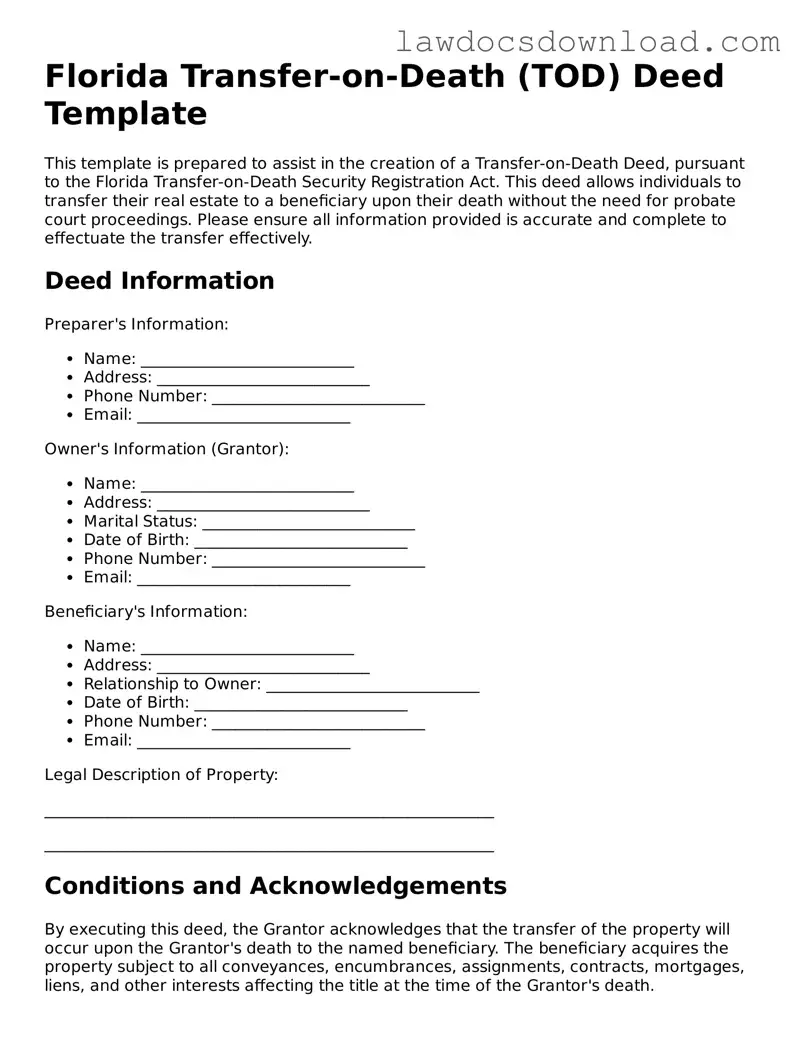Florida Transfer-on-Death (TOD) Deed Template
This template is prepared to assist in the creation of a Transfer-on-Death Deed, pursuant to the Florida Transfer-on-Death Security Registration Act. This deed allows individuals to transfer their real estate to a beneficiary upon their death without the need for probate court proceedings. Please ensure all information provided is accurate and complete to effectuate the transfer effectively.
Deed Information
Preparer's Information:
- Name: ___________________________
- Address: ___________________________
- Phone Number: ___________________________
- Email: ___________________________
Owner's Information (Grantor):
- Name: ___________________________
- Address: ___________________________
- Marital Status: ___________________________
- Date of Birth: ___________________________
- Phone Number: ___________________________
- Email: ___________________________
Beneficiary's Information:
- Name: ___________________________
- Address: ___________________________
- Relationship to Owner: ___________________________
- Date of Birth: ___________________________
- Phone Number: ___________________________
- Email: ___________________________
Legal Description of Property:
_________________________________________________________
_________________________________________________________
Conditions and Acknowledgements
By executing this deed, the Grantor acknowledges that the transfer of the property will occur upon the Grantor's death to the named beneficiary. The beneficiary acquires the property subject to all conveyances, encumbrances, assignments, contracts, mortgages, liens, and other interests affecting the title at the time of the Grantor's death.
Execution
This document must be signed by the Grantor and notarized to be effective. The presence of witnesses may be required by law for this document to be legally binding.
Grantor's Signature: ___________________________ Date: ____________
Witness #1 Signature: ___________________________ Date: ____________
Witness #2 Signature: ___________________________ Date: ____________
State of Florida
County of _____________________
This document was acknowledged before me on ______________ (date) by _______________________ (name of Grantor), who is personally known to me or who has produced ____________________________ (type of identification) as identification.
Notary Public Signature: ___________________________
Printed Name: ___________________________
Commission Number: ___________________________
My Commission Expires: ___________________________
Please note: This template is provided for general information purposes only and may not suit your specific circumstances. It is always recommended to consult with a legal professional before executing any legal documents.
